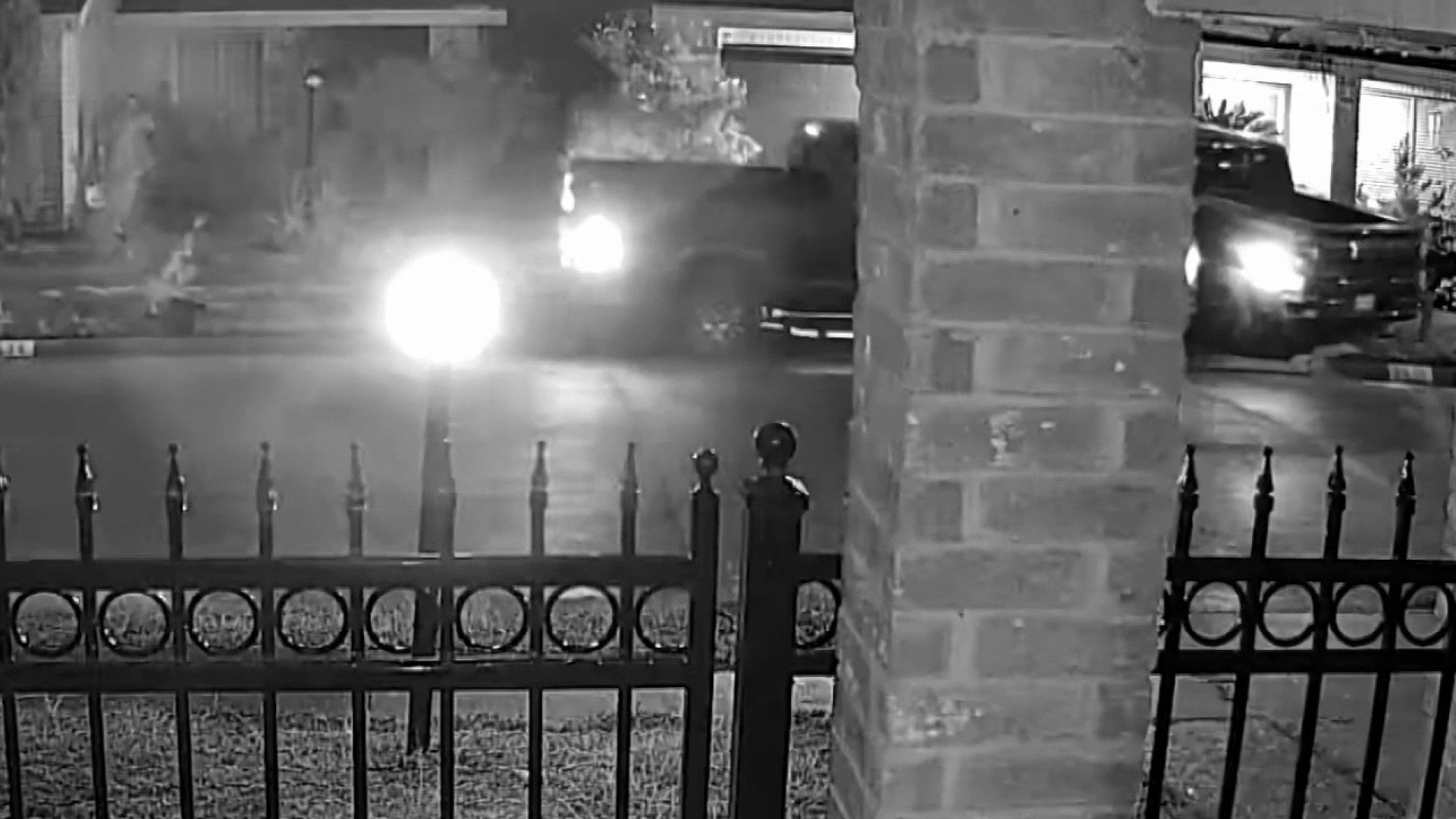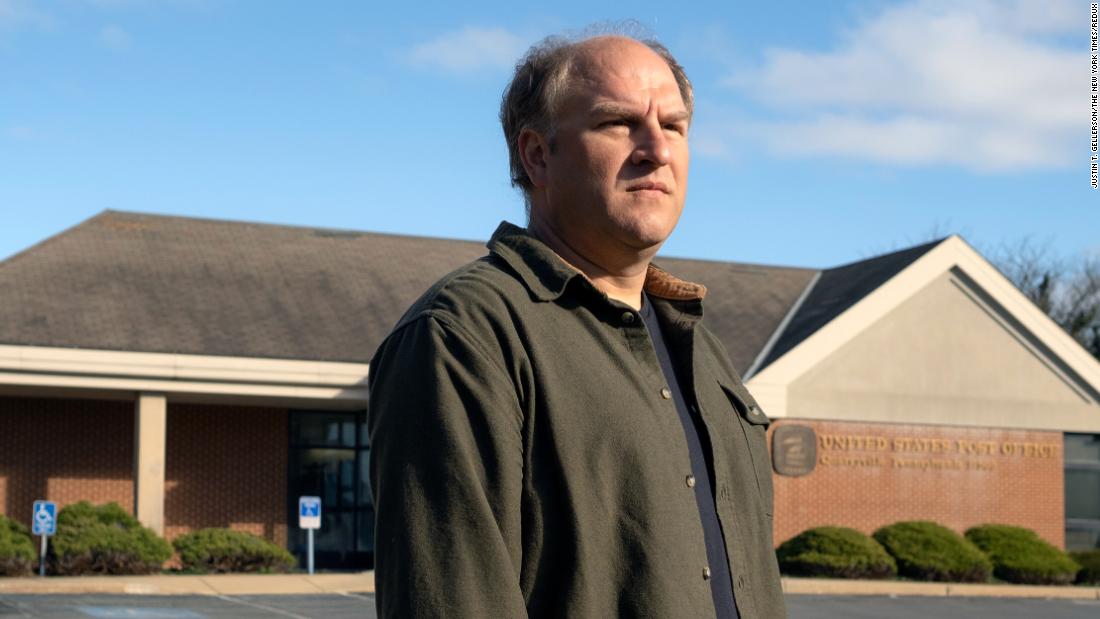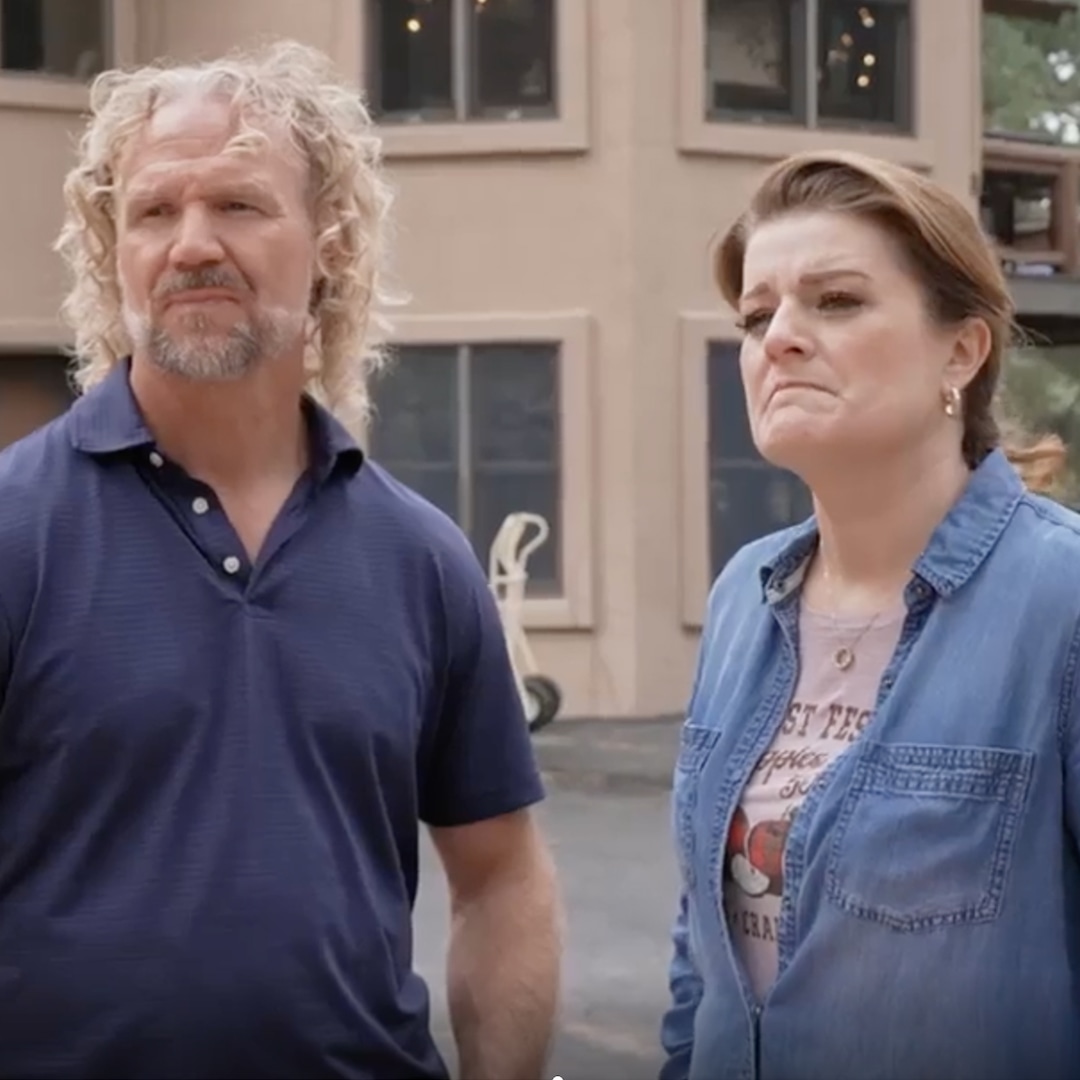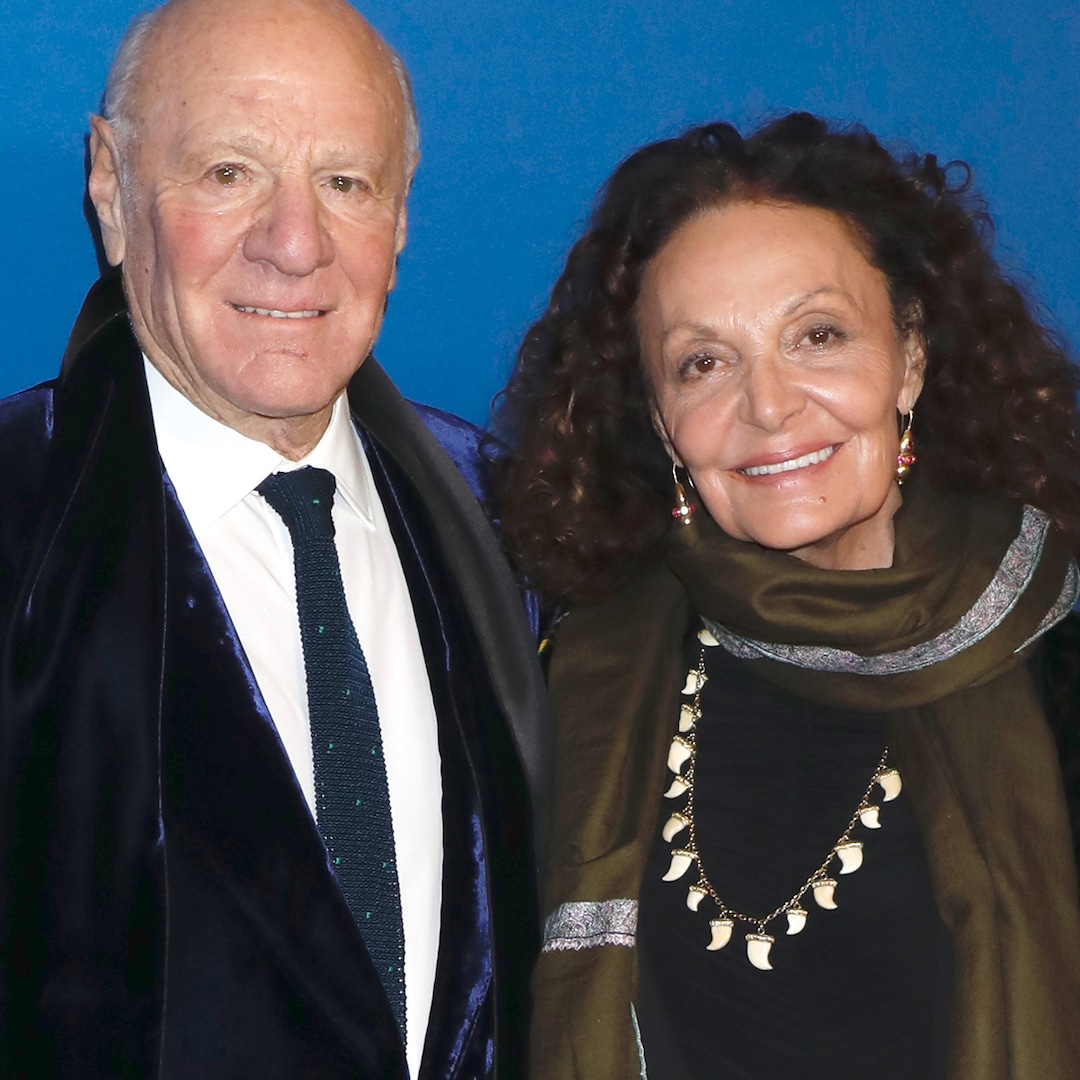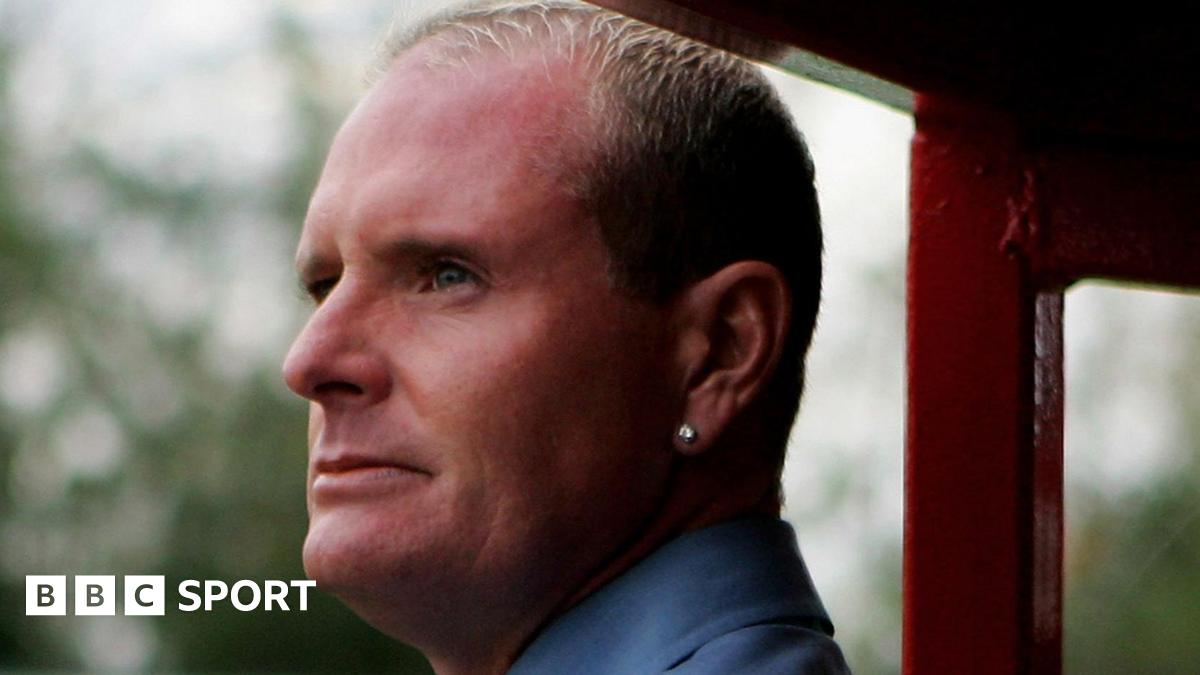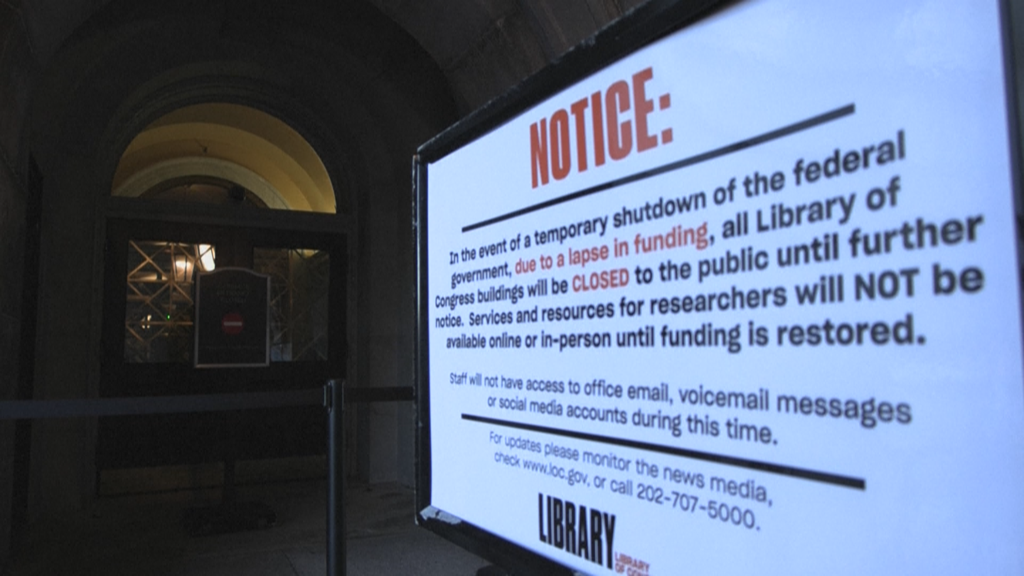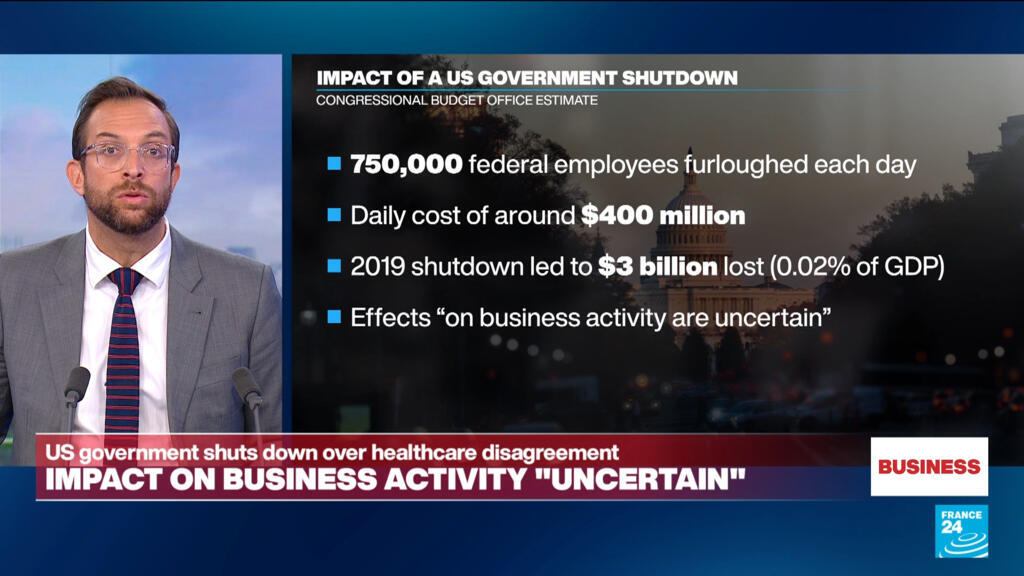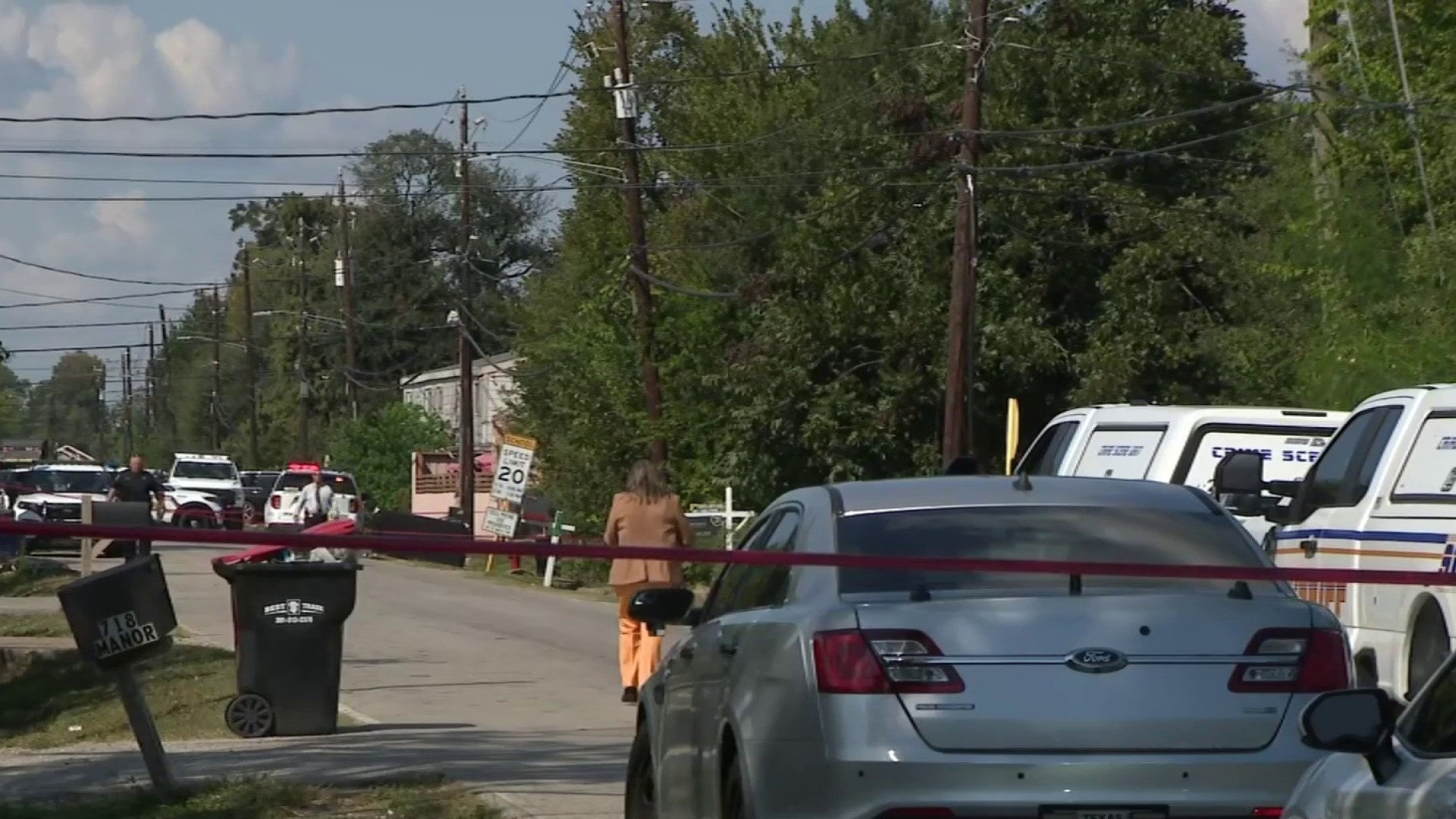Death Row Inmate Says He’s Not Done Living
For Charles Victor Thompson, the one constant in his life has been the almost three decades he’s spent as Inmate No. 00999306 in a small, isolated prison cell. Now it seems the one and final thing that will change that is his scheduled execution on January 28. In 1999, he was convicted of killing his […] The post Death Row Inmate Says He’s Not Done Living appeared first on Houston Press.


For Charles Victor Thompson, the one constant in his life has been the almost three decades he’s spent as Inmate No. 00999306 in a small, isolated prison cell. Now it seems the one and final thing that will change that is his scheduled execution on January 28.
In 1999, he was convicted of killing his off-and-on girlfriend Dennise Hayslip and her new lover. Darren Cain. Thompson doesn’t disagree that he fired the shots, but claims that the hospital is responsible for Hayslip’s death. He’s hoping for a stay of execution, but concedes that could be challenging. Clemency is even less possible, he says.
His other claim to notoriety is that in 2005, he engineered an escape from the Harris County Jail while being sentenced to death for a second time. He wasn’t picked up until four days later in Louisiana, but he surmises that local authorities were so embarrassed by this that he got on their priority list.
If so, they took a while to get to him. He’s been incarcerated at taxpayer expense for 27 years now and his one question, and one the Houston Press asked the DA’s Office: Why now?
Thompson, 55, known to his supporters and comrades on Texas Death Row as “Chuck,” spoke to the Press last week from the Allan B. Polunsky Unit in Livingston and acknowledged that getting a stay, a temporary reprieve based on new evidence, is a long shot.
“Once you’re denied by the Supreme Court in your final appeal, you can’t bring up anything that was ever filed before,” he said. “You can only bring new evidence pertaining to those issues. We have a little bit. We have a private investigator, one of the best. I don’t want to tip their hand.”
The execution date, the first of Harris County District Attorney Sean Teare’s tenure, surprised Thompson and piqued the interest of other death row inmates who fear they could be next.
“Why am I being thrown under the bus? The escape, [pressure from] the victim’s family, I guess,” Thompson said.
Andrew Smith, division chief for post-conviction writs at the Harris County DA’s Office, said the office requested a judge sign the execution order because Thompson has exhausted all his appeals and is therefore “date-eligible.”
“It’s been since 2021 since he exhausted all his appeals, and there’s zero question as to his culpability in this case,” Smith said.
January 28 was chosen by the Texas Department of Criminal Justice based on calendar availability and to bypass the winter holidays, so an inquiry about how the date was set nets several different responses. It was, however, set into motion by the Harris County DA’s Office.
During an hour-long interview behind plexiglass on October 22, Thompson laughed occasionally, joked with female guards and tried his best to remind himself and those in the visitation room that he’s not a bad guy.
“Ol’ Chuck, he’s a hoot,” one officer said.
Friendly, affable and easy to talk with, Chuck Thompson is by all accounts, a con artist. He’s the kind of guy who can don a pair of sunglasses, wrinkle-free khaki Dockers and a cobalt blue button-down and walk out of the Harris County Jail, posing as an investigator with the Texas Attorney General’s Office. Not just anyone can do that. Thompson doesn’t have any visible tattoos and, back in ’05, he may have looked more like a cop than an inmate.
He wasn’t always so cool and collected.
The inmate says he was drunk and strung out on cocaine when he went to Hayslip’s apartment on Wunderlich Drive in north Houston and confronted his ex’s new love interest. Thompson has said that Cain charged at him and he grabbed a gun in the house to defend himself. Hayslip intervened in the altercation between the two men and was shot in the cheek.
Trial testimony tells a different story: that Thompson showed up at the apartment with a gun and shot Cain four times and Hayslip once. Thompson did not testify at trial.
Originally charged with manslaughter after Cain died at the crime scene, charges were upgraded when Hayslip died a week later at Memorial Hermann Hospital. Thompson was eligible for a death sentence because the crime was a double homicide, which is covered under the capital murder statute.
Thompson says that Hayslip, who was 39 at the time of her death, was walking and talking in the moments before she was transported by Life Flight helicopter to the hospital. Trial testimony revealed that Hayslip’s dentures were blown out and her tongue was severed.
“There were no winners in this situation,” Thompson said. “It’s tragic what happened. I regret it. I have remorse. I want people to be able to heal and move past it. I pray for them and I’ve asked them to forgive me.”
A bullet penetrated Hayslip’s airway, and medical records showed that her breathing tube was dislodged from her windpipe, causing her to go without oxygen for five to 10 minutes. Medical expert Dr. Paul Radelat testified in a civil case that hospital staff made mistakes but they weren’t malicious.
“The shooter, I think we can safely say, intended evil,” Radelat says in an episode of the 2018 Netflix documentary series I Am A Killer, which featured the Charles Thompson case.
In a 2019 appeal, Thompson argued that “the death of Ms. Hayslip was the sole result of her loss of oxygen to the brain, which in turn caused her family to terminate her life one week after she was shot.” If Hayslip had survived, Thompson’s maximum sentence would have been life in prison.
Hayslip’s family sued the hospital for medical malpractice, but a judge found that hospital staff was not at fault. Hayslip’s son Wade pointed out in the Netflix documentary, “She’s not in the hospital if you don’t shoot her.”

Thompson says he was disappointed and surprised to find out he was on Teare’s radar. The new DA took office in January 2025 and has secured two death penalty convictions but no execution dates had been set until Thompson’s came up last month. Nine people were executed during the two-term tenure of Teare’s predecessor, Kim Ogg.
“Kim Ogg made me nervous,” Thompson says. “She killed three of my friends during her last year in office.”
Thompson says he’d just filed a motion to appoint new counsel the week before his execution date was set.
“I’ve been trying to push things forward,” he said. “I haven’t just been sitting here playing chess and dominoes, waiting to die like a lot of people do. I never wanted to be that guy with 11th-hour appeals sitting behind the execution chamber waiting for a phone call.”
Harris County juries hand down death sentences in comparatively high numbers — of the 167 men and women on Texas Death Row, 63 were tried in Houston — but the Bayou City is not known for setting dates.
District Judge Lori Chambers Gray signed the execution order on September 11 during a hearing at which Thompson and his pro bono attorney Eric Allen of Ohio appeared via videoconference. A spokesperson for Gray said the judge is prohibited from commenting on matters pending in her courtroom. Allen and another Thompson attorney, Greg Gardner of Colorado, could not be reached for comment.
So why did Thompson, all of a sudden, get an execution date?
The prisoner said there were 18 people at the hearing when his death date was set. Most were members of Cain’s family; some were friends of Hayslip’s from Bimbo’s bar, a dive joint frequented by Thompson and his victims. No one was there to support Thompson.
“Eighteen people took off work on a Thursday morning and they were there at 8:15 when the camera came on,” Thompson said. “Court didn’t even start until 9, so I think they pushed for it, the Cain family and all the bartenders and friends. They’ve been avidly against me and my supporters for 28 years.”
The DA’s office confirmed that families in four different death penalty cases have contacted the office since the new administration took over in January. When asked if pressure was applied to the DA’s office from the Cain and Hayslip families, Smith reiterated that Thompson has exhausted his appeals.
“He murdered two people,” Smith said. “He’s a dangerous individual and the jury’s verdict needs to be respected.”
Thompson says he’s asked for forgiveness twice and believes members of the Hayslip family may have mixed feelings, with some who would be OK with him serving life without the possibility of parole. Hayslip’s son Wade said in a television interview that he wants another apology from Thompson when the condemned man is on the gurney on execution day.
“I understand that,” Thompson says. “I still love [Dennise Hayslip]. I’ve never spoke bad about her. I refuse to do that. I was raised better. We were both living a poor lifestyle. We were both alcoholics. It was just a bunch of bad things that came together all at once.”
When Thompson turned himself in after the shooting — he says he “made himself available for questioning” by going to the police station with his father — officers never tested his blood alcohol content, which he says would have shown he was heavily intoxicated.
The night before the shooting, he went home with Hayslip after shutting down Bimbo’s at 2 a.m. Cain showed up. “One thing led to another, and me and him fought,” Thompson said.
Houston police were called and separated the two men. “If they’d done their job, I wouldn’t be sitting here,” Thompson said. “It was obvious that I was three sheets to the wind. They let me walk off, I was staggering, and [they let me] get in my car and drive away. I should have gone to jail for public intoxication.”
Thompson returned to the house hours later, and Cain was still there. That’s when the shooting happened.

Thompson’s digital prison file shows that he dropped out of school in 10th grade and worked as a laborer, heating and air conditioning installer and exterminator. He had no prior prison record when the crime occurred on April 30, 1998, but he says he got into trouble as a juvenile. Thompson was 27 years old when the crime occurred.
“Thompson got into an argument with a white male and white female in her apartment,” according to the Texas Department of Criminal Justice summary. “The night before, officers had been called to the same address and had escorted Thompson away from the residence. Thompson returned early the next morning and kicked the door in. Thompson shot the male, causing his death, and injuring the female severely enough to require life flight to the hospital. She died one week later, as a result of the shooting.”
Escape from Harris County
Thompson was sentenced to death twice. He escaped while in Harris County custody after his second sentencing hearing in 2005 and went on the run for four days, eventually being apprehended in Shreveport, Louisiana. Although Thompson didn’t escape from the prison where death row is housed, he is one of just three inmates in Texas history to escape while sentenced to death.
Raymond Hamilton, a member of the Bonnie and Clyde gang, escaped in 1934 and was later apprehended and executed. Martin Gurule escaped in 1998. The inmate was shot in the back by guards while scaling a fence and his body was later recovered in the Trinity River. Following Gurule’s escape, death row was moved from the O.B. Ellis Unit in Huntsville to Polunsky in Livingston. Executions occur in Huntsville but the prisoners set to die aren’t moved until their death date.
Thompson had street clothes hidden in his cell that he wore to the resentencing hearing. He posed as an investigator with the attorney general’s office, flashing a doctored ID badge and walking out of the Harris County Jail. He said he called upon his years of playing Dungeons & Dragons to coach himself to “stay in character.”
“I told myself to walk, not run,” he said.
Once he was safely out of sight of the jail, he stripped down to a tank top and shorts to pose as a jogger, then he hopped on a boxcar train. He was arrested while using a payphone outside of a Shreveport liquor store. He’d called his parents and a female friend who he’d hoped would help him flee to Canada. She turned him in for a $10,000 reward.
While on the run, Thompson says he posed as a Hurricane Katrina evacuee and was given money by “good Samaritans.” Thompson’s escape is outlined in detail in the book The Grass Beneath His Feet by Roger Rodriguez, published in 2009. Thompson told the Press he ghostwrote the book, which is riddled with typographical errors and bounces around from flashbacks to his childhood to the crime scene to the escape.
The inmate told the Press he escaped “out of sheer frustration.” The state had already decided twice that he deserved to die, so when he saw a chance at freedom, he took it. After Thompson’s escape, a rumor swirled that Jorge Rivas, a member of the Texas Seven who escaped the maximum security John B. Connally Unit in 2000, planted the idea in Thompson’s head, saying, “I couldn’t do it but you can.”
When asked about the rumor, Thompson said, “I remember Jorge. He was a friend of mine.” Rivas was executed in 2012.
Thompson says no one helped him with the escape and that there are some details — like how he got a handcuff key — that he’ll take to his grave. “I work alone,” he said, flashing a grin.”It was a different time, when there weren’t smartphones and cameras everywhere.” He says he wouldn’t be able to pull it off today, “even if I had a head start.”
“I just wanted to live,” he said. “I was angry with Harris County because of what was done to me. I was out there for four days and I kinda debunked their whole ‘future threat to society’ thing.”
Thompson says he considered robbing a bank so he could buy a car but authorities got to him before he could get into more trouble. His four days on the lam probably destroyed his chance at clemency, he says.
“Clemency is not really an option for me because of my escape,” Thompson said. “I was told in no uncertain terms when I came back from the escape that if I didn’t cooperate and let them put me on a lie detector test and answer all their questions, that I could forget about clemency. That’s unofficial. I’m sure they won’t acknowledge it now because the law says I get a chance at it. We’ll file something. I’m not against it but I don’t expect it.”
Thompson claims that he found out that the Harris County DA’s office was planning to move forward with an execution date when they sent investigators to shake down his cell in August. Such an “inventory” is standard procedure to determine what motions an inmate may be planning to file, Smith said. Prison employees put the inmate’s belongings in a cart and wheel it to a conference room for the DA’s office to review, and they are trained to exclude privileged legal documents.
Thompson says he was told by his attorney that the DA’s office was looking for evidence that the inmate might be planning an “Atkins claim” of mental incompetence, but Thompson says authorities already knew from his court appearances and an IQ test that he did not have intellectual disabilities.
“I feel like I’m not afforded the same courtesy that most prisoners get when they get to this stage,” he says. “[Prosecutors] usually contact counsel and ask if they’re working on anything and say they’re looking at seeking a date. It was wrong what they did. No prosecutor is allowed to read your attorney-client communications. They had all my stuff for four hours.”
The inmate says he inquired about filing a grievance against the DA’s office and his attorney told him, “At this point, we’ve got to focus on the task at hand, trying to get a stay.”
Smith said death row inmates frequently file motions for a stay once an execution date is set, and the state then files a response. It’s not unheard of for a stay to be granted.
Life on Death Row
Thompson was moved on September 11 to “Death Watch,” an isolated cell at the Polunsky Unit with a toilet and sink, a metal bed and a camera that monitors him 24 hours a day.

Prior to the move, he was in a one-man cell in the segregated 12 Building, where death row inmates can communicate with each other via a makeshift “intercom” and pass items from cell to cell on a clothesline. Communicating with other inmates has been difficult for Thompson because he has tinnitus and partial hearing loss in one ear.
“When someone tells me to send the line, I’m like, ‘What’s the time?’ When they say, ‘What’s the time?’ I’m sending my fishing line,” he says. He also recently broke his glasses and says that with about 100 days to live, no one is moving swiftly to get him to the optometrist.
There are just three men on Death Watch: Thompson; Cedric Ricks of Tarrant County, who has an execution date set for March; and Billy Tracy, who lives full-time in the super-segregated and monitored area for security reasons. Tracy has a history of assaulting law enforcement officers and got his death sentence for killing a guard at the Barry B. Telford Unit in 2015.
On Death Watch, Thompson gets about two hours of recreation time, five days a week. The inmate was part of a faith-based program on death row prior to getting his execution date. He says he was a “cradle Catholic,” raised going to church, but he began using drugs and drinking when he was 12 years old, which set into motion a lifestyle of troublemaking. He returned to his faith recently, although he doesn’t make a big deal about it.

He spends his time reading, writing penpals and fundraising through a network of supporters, most of them women, about 300 of whom are in a Facebook group called Friends of Charles Victor Thompson, operated by a woman in Wales. Although he says he hasn’t always been portrayed favorably in the media, he does interviews when asked because it helps him build a network of supporters who help pay for attorneys and private investigators.
The inmate has lived about half his life in the free world and the other half in prison and says solitary confinement “ain’t no way to live.” He added that he’s deeply remorseful for the crime he committed. He also isn’t sure why he’s been singled out by Harris County to die when others are having their cases reviewed by Teare’s new Conviction Integrity Unit.
“I feel like they threw me under the bus,” Thompson says. “People think it’s probably because of the escape. It’s a black eye for law enforcement in Houston, I guess.”
The Conviction Integrity Unit, led by prosecutor Scott Pope, generally reviews cases when there is a claim of innocence, which has not been made in Thompson’s case.
Thompson also claims that former Assistant DA Kelly Siegler, who prosecuted him in the late 1990s while Chuck Rosenthal was district attorney, made deals with a jailhouse snitch to provide false information against him. The informant’s testimony resulted in Thompson’s death sentence being overturned after prosecutors played an audio tape of a jail call at trial without notifying Thompson or his attorneys. The outcome of the second sentencing hearing was the same as the first: death.
Siegler worked as a prosecutor from 1987 to 2008, during which time she sent 19 people to death row. The DA’s office didn’t respond to Thompson’s claims about the former ADA.
As Thompson enters what could be the last three months of his life, he says he will be diligently working toward getting a stay of execution and mending relationships with his loved ones.
Thompson’s parents are still married and live in Houston. His mother, in her late 70s, is heartbroken, Thompson says. The prisoner’s older brother has been in constant trouble with the law and “is about to go back to prison for the seventh time.” His younger brother, who is 48 years old, lives at home with his parents and was awaiting a possible cancer diagnosis last week.
Thompson talks to his parents often but they haven’t visited in person in years.
“She’s a blessing,” he said of his mother. “I’m surprised she hasn’t snapped and wound up in the loony bin. They’re aging and it’s hard for them to get up here. They want to stay out of the public eye.”
Thompson has a daughter, 34, and a son, 31, and maintains a good relationship with his daughter.
“My son grew up without me because of my meth addiction,” he said. “In 1995, I split up with his mother, so he grew up without a dad. It crushed my heart last year, writing letters to our kids, all the guys in the faith-based program, I’d say 75 percent, talked about being in a broken home and growing up without a dad. I never had to experience that myself but I did it to my kid. I felt so low. Now I understand what he went through.”
Thompson says he hasn’t been a model prisoner and had a period of rebellion after his escape.
“I had a little pirate-raise-the-flag stage,” he said with a laugh. “Every man reaches a stage in his life where it’s time to throw caution to the wind. I came back [after the escape] and I had a few problems. I ended up getting carried out of a captain’s office. Nothing major. I don’t have any assaults or any violence. I’ve never let them spray me with the gas. Why torture myself?”
He said last week that, despite a sometimes rocky 27 years behind bars, he believes he’ll get a stay of execution.
“It’s in God’s hands,” he says. “I’ve been told by the guys to not be arrogant, don’t expect it, just humble yourself before God. Hope for the best and prepare for the worst.”
“I’m not afraid of death, as it’s a journey we all make,” the inmate wrote in a letter to the Press. “If ya right with the Lord and know where you’re going, what’s to fear? I’m just not in any hurry to check out. Got lots of living to do still.”
The post Death Row Inmate Says He’s Not Done Living appeared first on Houston Press.



